Reference
Reference1
Reference2
What is a pipe
Pipes are simple functions to use in template expressions to accept an input value and return a transformed value. Pipes are useful because you can use them throughout your application, while only declaring each pipe once. For example, you would use a pipe to show a date as April 15, 1988 rather than the raw string format.
For the sample application used in this topic, see the live example / download example.
Built-in pipes
Angular provides built-in pipes for typical data transformations, including transformations for internationalization (i18n), which use locale information to format data. The following are commonly used built-in pipes for data formatting:
DatePipe: Formats a date value according to locale rules.
UpperCasePipe: Transforms text to all upper case.
LowerCasePipe: Transforms text to all lower case.
CurrencyPipe: Transforms a number to a currency string, formatted according to locale rules.
DecimalPipe: Transforms a number into a string with a decimal point, formatted according to locale rules.
PercentPipe: Transforms a number to a percentage string, formatted according to locale rules.
AsyncPipe
{{ obj_expression | async }}
Exported from
obj Observable<T> | Subscribable<T> | Promise<T>
Description
The async pipe subscribes to an Observable or Promise and returns the latest value it has emitted. When a new value is emitted, the async pipe marks the component to be checked for changes. When the component gets destroyed, the async pipe unsubscribes automatically to avoid potential memory leaks. When the reference of the expression changes, the async pipe automatically unsubscribes from the old Observable or Promise and subscribes to the new one.
Further information is available in the Usage Notes...
This example binds a Promise to the view. Clicking the Resolve button resolves the promise.
@Component({
selector: 'async-promise-pipe',
template: `<div>
<code>promise|async</code>:
<button (click)="clicked()">{{ arrived ? 'Reset' : 'Resolve' }}</button>
<span>Wait for it... {{ greeting | async }}</span>
</div>`
})
export class AsyncPromisePipeComponent {
greeting: Promise<string>|null = null;
arrived: boolean = false;
private resolve: Function|null = null;
constructor() {
this.reset();
}
reset() {
this.arrived = false;
this.greeting = new Promise<string>((resolve, reject) => {
this.resolve = resolve;
});
}
clicked() {
if (this.arrived) {
this.reset();
} else {
this.resolve!('hi there!');
this.arrived = true;
}
}
}
CurrencyPipe
@Component({
selector: 'currency-pipe',
template: `<div>
<!--output '$0.26'-->
<p>A: {{a | currency}}</p>
<!--output 'CA$0.26'-->
<p>A: {{a | currency:'CAD'}}</p>
<!--output 'CAD0.26'-->
<p>A: {{a | currency:'CAD':'code'}}</p>
<!--output 'CA$0,001.35'-->
<p>B: {{b | currency:'CAD':'symbol':'4.2-2'}}</p>
<!--output '$0,001.35'-->
<p>B: {{b | currency:'CAD':'symbol-narrow':'4.2-2'}}</p>
<!--output '0 001,35 CA$'-->
<p>B: {{b | currency:'CAD':'symbol':'4.2-2':'fr'}}</p>
<!--output 'CLP1' because CLP has no cents-->
<p>B: {{b | currency:'CLP'}}</p>
</div>`
})
export class CurrencyPipeComponent {
a: number = 0.259;
b: number = 1.3495;
}
DatePipe
Format examples
These examples transform a date into various formats, assuming that dateObj is a JavaScript Date object for year: 2015, month: 6, day: 15, hour: 21, minute: 43, second: 11, given in the local time for the en-US locale.
{{ dateObj | date }} // output is 'Jun 15, 2015'
{{ dateObj | date:'medium' }} // output is 'Jun 15, 2015, 9:43:11 PM'
{{ dateObj | date:'shortTime' }} // output is '9:43 PM'
{{ dateObj | date:'mm:ss' }} // output is '43:11'
JSON
Slice Pipe
append
Number


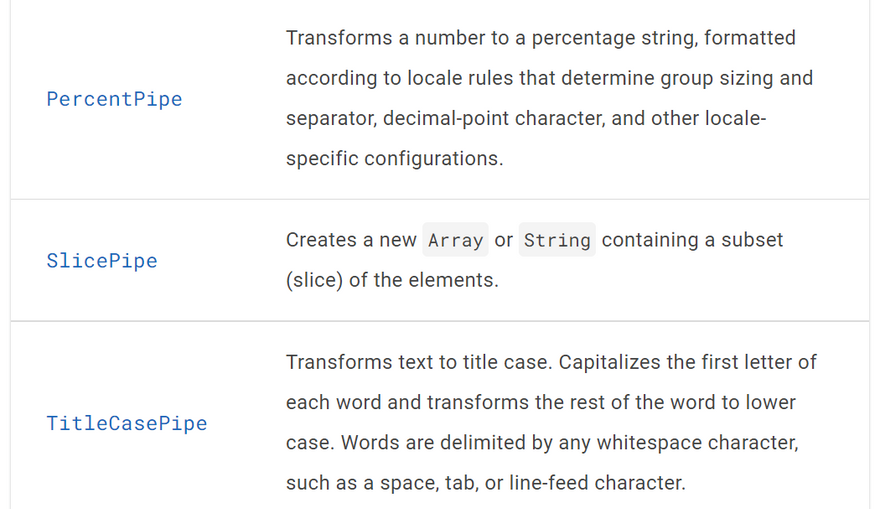
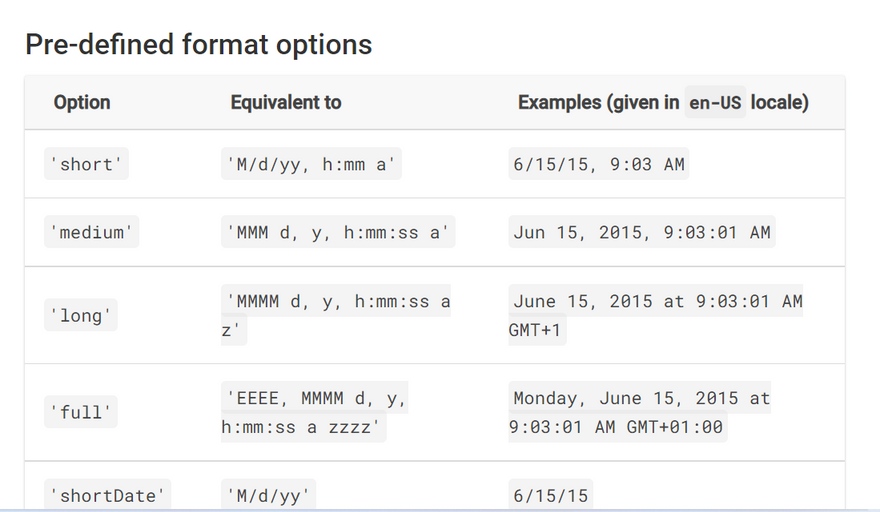
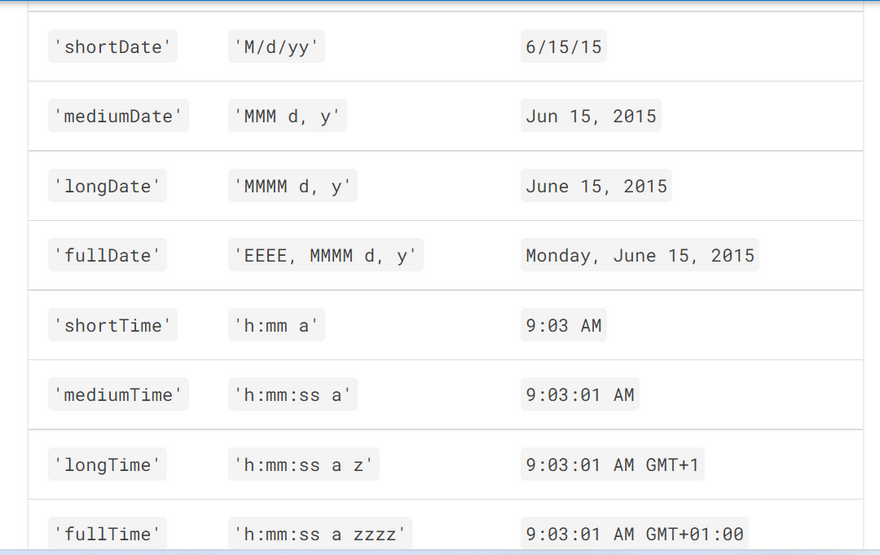



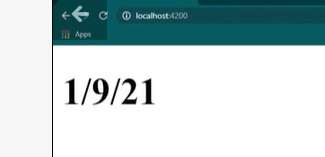
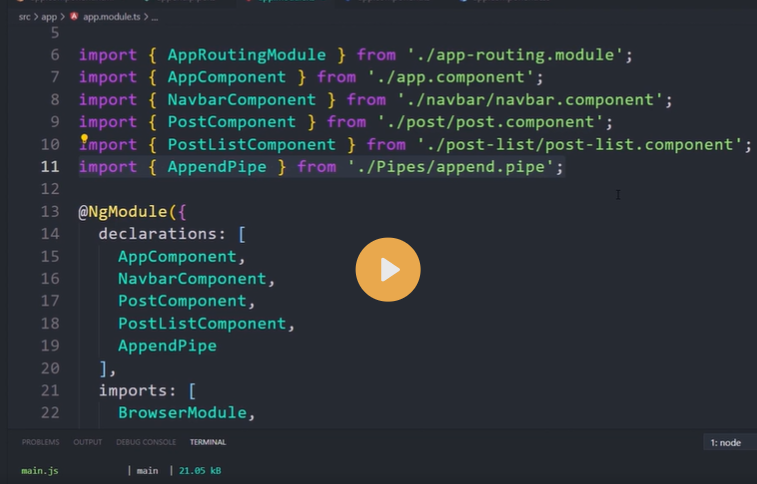






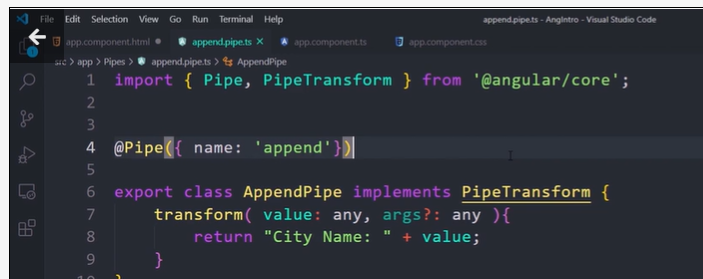

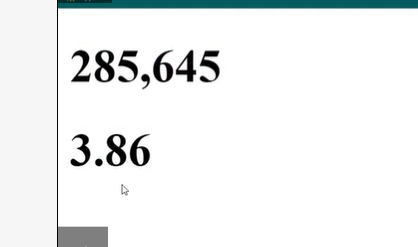

Top comments (0)